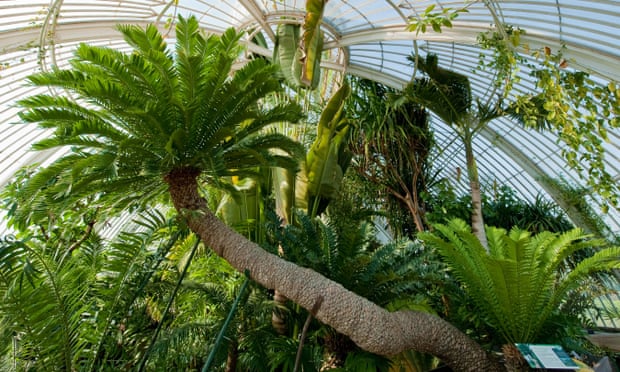I came to horticulture after university. I had finished a postgrad in sustainable agriculture and was working in a cafe while living with my parents in Stirling. It was the middle of the last recession and I was finding it hard to get a job. My parents were trying to sell their house and, as I had a bit of time on my hands, they asked me to sort out the garden.
It was a jungle. I cleared all the weeds, and began to plant it – things like lobelia ‘Queen Victoria’ and hollyhock. Then I began a vegetable plot – mangetout, swede, beetroot, purple potatoes – and even revived their tiny greenhouse. I became obsessed. Horticulture combined all sorts of things I found interesting – both ecology and science, but it also had an artistic side; it’s not something that’s talked about in schools.
I couldn’t afford to go back to university, but fortunately, most of the training opportunities for horticulture are paid. I managed to get an apprenticeship at an RHS garden in north Devon and it all started from there.
Sign up to our Inside Saturday newsletter for an exclusive behind-the-scenes look at the making of the magazine’s biggest features, as well as a curated list of our weekly highlights.
I’ve worked at Kew for four and a half years. At first I worked in the Temperate House, which has a Mediterranean climate. But then I was given the opportunity to move to the Palm House, where the tropical plants live, and I jumped at the chance. It is home to a plant that is, as far as we know, the oldest pot plant in the world. It is a giant cycad or Encephalartos altensteinii, native to the Eastern Cape province of South Africa and brought to the UK in 1775 by the botanist Francis Masson. In 1848, the Palm House was completed at Kew Gardens and this giant cycad was moved there.
He is toxic all the way through: very spiky, very stoic. We see him as a gentle giant, really – he just gets on with life. When you get to know a person very well, you can tell instantly if they look a little off colour. Caring for plants is the same. As I walk through the Palm House, I’m looking out for how the different plants seem, their colour, texture, the angles of their leaves, and I’m also paying attention to the quality of the air – is it too dry, or too hot?

Some plants are very dramatic, and will droop significantly or start to yellow as soon as something is wrong, but the giant cycad isn’t one of those. He’s more like a grumpy grandfather, who sits by the fire and doesn’t say much except, “Leave me be; I’ll be fine.” He just keeps on growing, slowly, approximately 2.5cm a year. Today, he’s about 4 metres long, and held up by a series of metal supports so his trunk doesn’t break.
Over the winter we probably water him once a week, and in the summer months he’ll get a little bit more. We’ll water him all the way through his pot, give him a good soak, which is a useful tip for most pot plants – give them a good soak through the pot rather than sprinkling a bit of water on top. Apart from that, he gets sprayed with water every morning like all the other plants, and is fed every week with fertiliser. It is sometimes seaweed-based but we like to change it up so the plants get all their minerals. Though generally we just leave him to do his thing.
It’s unavoidable in this line of work to personify plants and begin to feel for them. I think that’s something that humans always do. You might remember that one plant flowered fantastically one year, but then the next year it doesn’t do so well, and you think, “Oh god, what’s wrong?” So there is some anxiety. But equally in horticulture there’s a requirement to be detached – because something will always go wrong. Plants will decide whether or not they want to grow. And there’s nothing we can do about it. We just have to get over it.
The giant cycad is so chill that he’s not usually the source of this anxiety – the only danger he faces is when he needs moving or repotting. He’s been moved before, but when it’s on your head, that’s really nerve-racking. You think, this is something that has been part of people’s lives for hundreds of years. If the worst happened and the end of the trunk did come off, it would probably still survive. But, obviously, you don’t want that to happen. I’m sure it’ll be fine.
As told to Felix Bazalgette
Do you have an experience to share? Email [email protected]
Stay connected with us on social media platform for instant update click here to join our Twitter, & Facebook
We are now on Telegram. Click here to join our channel (@TechiUpdate) and stay updated with the latest Technology headlines.
For all the latest Lifestyle News Click Here
